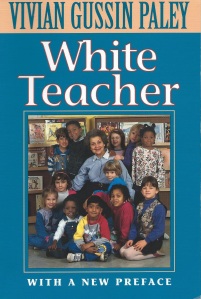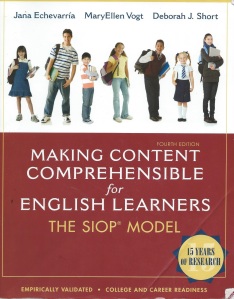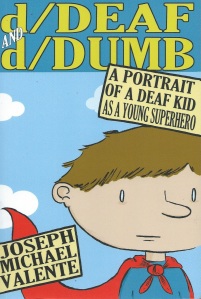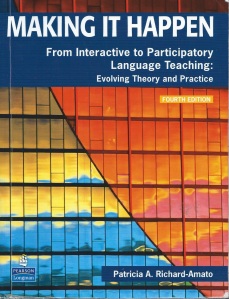Outdoor playtime has just ended, and the children line up to go into the classroom for lunch. As the line moves up the stairs, two children are left outside: Harry and Enid. Harry has run back to retrieve a hat he left in the playground. Meanwhile Enid is sitting crying at the bottom of the stairs. I move toward Harry to assist him while our classroom inclusion coach sits down with Enid, but I notice Enid turns her back to the coach. I abort my motion toward Harry and move toward Enid. Enid has a relationship with me that she does not have with the coach who only visits once every couple of weeks. I sit with Enid and ask her to take some deep breaths, modeling deep breathing myself while the coach goes to help Harry. Enid continues crying but looks at me. I place my hand on her back and ask her what happened. Enid lets out a string of unintelligible words in the midst of tears, but amidst the blathering I am able to make out the name of a classmate. I latch onto that, and suggest we go back in the classroom and she talk to that classmate. Enid nods, stands up and takes my hand, and we go into the classroom together.
According to Leslie Roffman and Todd Wanerman, “Bodies, relationships, emotions, and brains are all connected” (Roffman & Wanerman 2011, p. 21). For Enid, our relationship helped focus her emotions, my hand on her back helped her calm her body and focus her brain to articulate the issue. While I did not understand what it was she articulated, the fact that I listened and was able to pick up on something demonstrated for her that our relationship was meaningful and provided the impetus for proceeding.
I could have responded to her refusal to come to the classroom with everyone else with a sharp commandment to move, or a threat of punishment, or, even worse, by picking her up and carrying her. But had I done so, I would have denied her agency in this situation. By connecting with her and giving her that moment to make the decision herself to rise and join the class, I showed Enid that she is worthwhile, and that I recognized her as such. As Roffman and Wanerman indicate, “For emotional based learning to be effective in an educational setting, the teachers need to build strong, positive relationships with the children” (Roffman & Wanerman 2011, p. 32).
Our inclusion coach was a great person, and interacted wonderfully with the children, but her limited presence in the classroom sometimes made it difficult for her to connect with the children in the same way as those of us who knew them more personally. Nonetheless, as Roffman and Wanerman point out, “Each adult—teachers, staff, and parents—can add a slightly different but connected thread of observation and opinion that helps you locate the right expectations for progress” (Roffman & Wanerman 2011, p. 114).
The inclusion coach’s assistance in helping Harry get his hat was just as important for Harry, as my taking the time to listen to Enid was for her. For Harry, it was very important that he get his hat. He often felt a need to have his head covered, and even in the classroom he would often put on his jacket and keep his hood over his head. Reffman and Wanerman reveal that “Knowing how sensory, motor, and physical experience can help the child feel more calm, receptive, organized, or safe over time is the broadest and most effective teaching plan you can make” (Roffman & Wanerman 2011, p.65).
The reasons for Harry’s need to cover his head were not completely clear, but it was clear that there were times when he became overstimulated in the classroom. If the noise level in the classroom got too high, Harry would begin to get agitated. It is possible that wearing his hood helped by covering his ears and blocking out the noise when it became overwhelming. We attempted to get a pair of noise-cancelling headphones to help him with this, but when he wore them he would shout and add to the classroom noise level that led other children to be louder to be heard by their peers when playing.
Roffman and Wanerman make it clear that “Some children’s challenges make it much harder to transition into or enjoy a program and do not allow the luxury of time and patience before plans must be made” (Roffman & Wanerman 2011, p. 64). Harry went through a period in which he would bite other children when he was over-stimulated. It was something that was on the minds of the other children, even if they didn’t voice it directly. For instance, after seeing Harry bite another child, Ammon told this story:
Tiburón
Once upon a time there was a princess. And then she gotted vestido. And then there was a Elsa. And then Elsa went to there was a princess. And then there was a bad guy. And then there was tiburón bite people. And then it’s going to bite somebody. Then the shark bited somebody. The End.
Though he didn’t reference Harry directly, it was clear that biting was something that was now on Ammon’s mind. One day we discussed Harry’s biting as a class during circle. The children came to recognize that this was something that Harry was working on. They discussed different strategies they could use to help Harry with this issue.
Initially they suggested giving Harry a wide berth when he got agitated. This was something that a number of children had already begun to do, but it had resulted in children avoiding playing with Harry even when he wasn’t agitated. Through the course of the discussion the children talked about how to tell when he’s upset and when he’s not upset, and the importance of talking to him and finding out what he’s upset about, sometimes even helping to calm him down. This discussion ended up helping all of the children become more aware of other children’s emotions in general. As Roffman and Wanerman state, “If children learn to pay attention to the many different ways people communicate, their social skills will undoubtedly benefit” (Roffman & Wanerman 2011, p. 162)
One of the children had a chew toy that he kept around his neck to put in his mouth when he wanted to bite something. The children suggested getting one of these for Harry. The children thought deeply about ways that they could support each other, and after this discussion, they became less critical of Harry now that they understood his challenges better. They played together with him more often and learned to distinguish between times when it was appropriate to play near him and times when it was not. They stopped excluding Harry from their play and provided him with some of the social supports he needed to help him control his emotions. Harry was receiving the benefits described by Roffman and Wanerman in which, “in an inclusive setting, all kinds of children can befriend each other” (Roffman & Wanerman 2011, p. 10).
Of course, the children weren’t the only ones making accommodations to help Harry through this period. We found that we needed to increase our staff presence. When the teacher who had the strongest relationship to Harry was gone for several days, Harry began biting other children again. Roffman and Wanerman tell us that “for children with challenges and inclusion classrooms in general, the right amount of staff is one of the most important elements for success” (Roffman & Wanerman 2011, p. 116). We increased our staff by having a supervisor be in the classroom in addition to the regular teachers and substitute while Harry’s preferred teacher was away. Having enough teachers provided us with the opportunity to insure that we could be close to Harry and recognize the signs of his agitation before it escalated.
Having children like Harry and Enid in our program helped us become better teachers, and helped the children become more welcoming. As Roffman and Wanerman point out, “Inclusion, at its best, is a model that enriches every aspect of a program, from the experience of the child, to the skills of the teacher, to the harmony and diversity of the school community” (Roffman & Wanerman 2011, p. 8).
I welcome discussion and comments on this topic. Also, if there is a book that you would like to see me discuss in this blog, please comment on the Recommended Reading page. Next month I will most likely be discussing the book Psicología del Arte by Lev Vygotsky (2006).
References
Roffman, L. & T. Wanerman. (2011). Including one, including all: A guide to relationship-based early childhood education. St. Paul, MN: Redleaf Press.
Vygotsky, L.S. (2006 [1971, 1925]). Psicología del arte (C. Roche, Tran.). Barcelona, Spain: Ediciones Paidós.




 (en español)
(en español)




